Wyoming – The First National Park

Wyoming certainly didn't invent nature, but it was home to America's very first national park: Yellowstone. If you've never been to Yellowstone, it is quite a sight to behold. The national park is 3,468.4 square miles and features deep canyons, stunning lakes, winding rivers and towering mountains. It also features the largest supervolcano on the continent.
When Was It Invented?
Yellowstone, located largely in the northwest corner of Wyoming, became the first national park in the United States when President Ulysses S. Grant signed it into law in 1872. Some believe it to be the first national park in the world. While the Yellowstone area was inhabited by Native Americans for over 10,000 years, it was not discovered by explorers until the 1860s.
Vermont – Direct Current Electric Motor

Electric motor technology has come a long way. They power many of our children's toys, they power machines and tools, and now they are used to power electric cars. There have been many versions of electric motors throughout history but only one person can lay claim to the first DC electric motor.
When Was It Invented?
The DC electric motor is a battery-powered electric motor that was the first of its kind. Thomas Davenport developed it in 1834. It could be used to power machinery, including a printing press. His DC motor would pave the way for the invention of electric streetcars.
Alaska – Ranch Dressing

Ranch dressing is one of the most popular dips in the country. It goes well on a salad, yes, but you can use it as a dip for almost anything. From carrot sticks to french fries, chicken to pizza, ranch dressing is a staple food of America. It's not the healthiest dip there is but you would be a poor party host not to have some on hand. While it may be hard to imagine a world without ranch dressing, believe it or not, it wasn't invented until the mid 20th century.
When Was It Invented?
Steve Henson of Alaska invented ranch dressing in 1949. Working as a contracted plumber, Henson perfected one of his coworkers’ favorite buttermilk dressing recipes by throwing in some herbs and spices along with buttermilk and mayonnaise. Years later he bought Hidden Valley Ranch in California and started selling his dressing to local supermarkets. In 1972, he sold his dressing and the name to Clorox for an estimated $8 Million.
North Dakota – License Plate Tabs
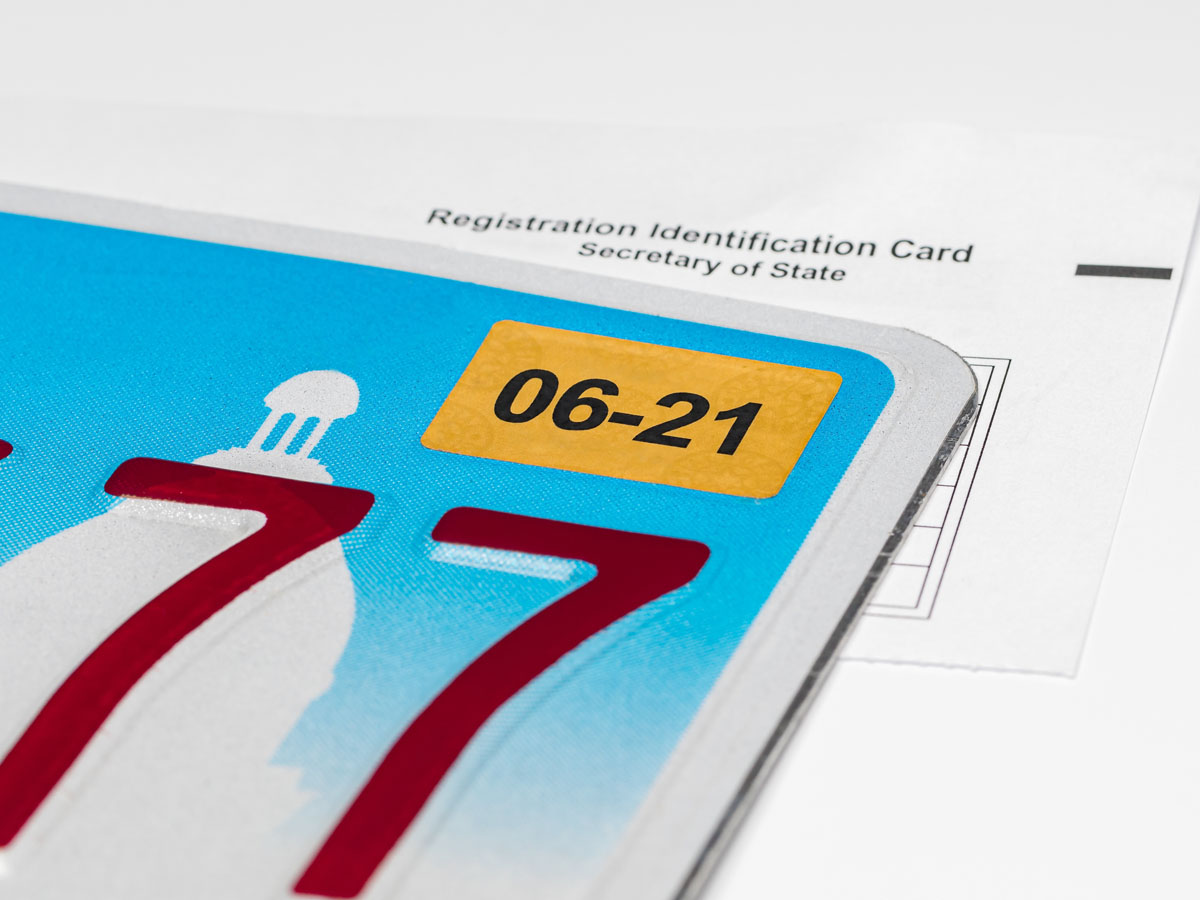
You may not relish this invention, particularly the hefty fee you have to pay for new ones every year, but like it or not, license plate tabs are a national requirement for every registered vehicle in the country. But there was a time we didn't have them, that is until DMV worker Lenard Milo Mennes came along.
When Was It Invented?
In the 1970s, Lernard Mennes came up with the idea of license plate tags while working at a DMV in North Dakota. The tags quickly became a requirement in North Dakota until the idea was implemented across the country. Before then, you had to get a whole new license plate every year, so really Lenard's solution was a lot more convenient for everyone.
South Dakota – Cyclotron
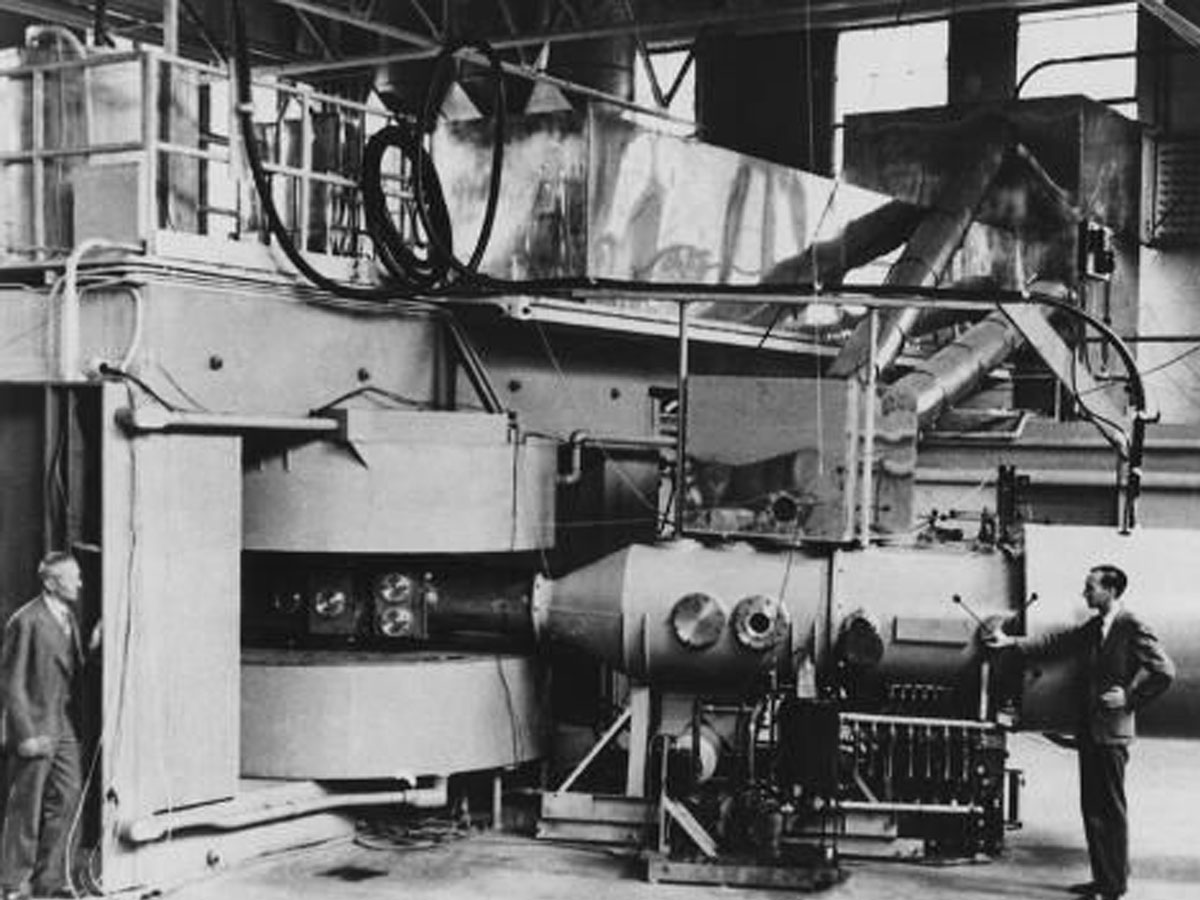
You may not know exactly what it is but the cyclotron is easily South Dakota's most significant invention. The cyclotron is a compact particle accelerator that produces radioactive isotopes (you may have to look that one up unless you are a chemistry major) for imaging and research purposes. It has also been used in the development of cancer treatments.
When Was It Invented?
Ernest O. Lawrence began working on the cyclotron in 1929 and was awarded his patent in 1932. Until the 1950s, it was the most powerful particle accelerator invented and would be used in various nuclear experiments. Lawrence even worked on the Manhattan Project and received a Nobel Prize in 1939.
Delaware – Teflon

Cooking with non-stick cookware can be a real pain. You either have to use a lot of butter or a lot of oil to prevent anything from sticking. Cooking eggs can be a downright hassle. That's why non-stick cookware has been a godsend to households across the country. The invention of Teflon has changed cooking as we know it and it all started in Delaware.
When Was It Invented?
Headquartered in Delaware, Teflon was discovered by DuPont chemist Roy J. Plunkett in 1938. Years before it found its way into our kitchen pots and pans, it was used in the Manhattan Project for its corrosion-resistant properties. To this very day, Teflon coating comes straight from Delaware.
Rhode Island – Mr. Potato Head

Mr. Potato Head is one of the most popular children's toys around and it's been that way for nearly 70 years. It was the very first toy advertised on television and has never gone out of production. Kids can use Mr. Potato Head to make silly faces to downright outrageous faces for their amusement. The only limitation is the child's imagination.
When Was It Invented?
Headquartered in Rhode Island, Hasbro employee came up with Mr. Potato Head in 1949. In the beginning, Mr. Potato Head was conceptualized as plastic parts with push pins that you could stick into a real potato. Later on, Hasbro would introduce a plastic potato in 1964 to go along with the plastic pieces in order to meet safety regulations and address customer complaints regarding rotting potatoes in their childrens' bedrooms.
Montana – Heart Monitor

Heart disease remains one of the leading causes of death in America. Millions of Americans suffer from it every year and hundreds of thousands will die from it each year. That's why monitoring your heart is so important. You should get it done regularly at the doctor's office and you should have a monitor at home so you can check your own heart rate. Monitoring your heart rate is especially important when working out. However, we didn't always have a way to monitor heart rate wirelessly but now we can because of Norman Holter.
When Was It Invented?
Norman Holter developed the first portable heart rate monitor called the Holter heart monitor in 1962. The portable device keeps track of heart rhythm through a wearable device and attached electrodes. It is used for patients with symptoms of arrhythmia who are not showing any abnormalities on an electrocardiogram. The Holter monitor can show what the electrocardiogram cannot.
Maine – The Microwave Oven

When you need to reheat food, pop popcorn, or defrost something from the freezer, a microwave oven really comes in handy. Though it’s difficult to imagine your kitchen without a microwave, that was the reality until Percy Lebaron Spencer of Maine came along.
When Was It Invented?
Percy Spencer, working for Raytheon, was chief of the power tube division. While he was building magnetrons, Spencer noticed that a candy bar in his pocket had melted when he was standing in front of a magnetron. Experimenting with the magnetron and its microwaves, he began cooking foods near it, including popcorn kernels. From there, he went on to create the first microwave and Raytheon filed the patent in 1945.
New Hampshire – Drip Coffee Pot

Before the Keurig, the drip coffee pot was essential for every home and office. For many people, it still is. It's hard to imagine getting your daily dose of caffeine without your morning coffee, but before Sir Benjamin Thompson, making coffee wasn't so easy.
When Was It Invented?
Sir Benjamin Thompson of New Hampshire invented the percolating coffee pot somewhere around 1810, working with the Bavarian Army to improve their diet and clothing. A personal distaste for tea led him to promote coffee to the soldiers, especially for its stimulating effects. Thanks to Thompson, all of America depends on coffee to get through the day.
Hawaii – Surfing

Surfing is one of the most popular watersports. While not everyone has the skill to do it well, millions of people across the globe are surfers in at least some respect. But even if you aren't brave enough to try it yourself, it's still fun to watch other people at the beach do it. The traditional watersport is centuries old and it all started in Hawaii.
When Was it Invented?
Surfing can be traced back as far as the 4th century BC by the Polynesians, but it was in Hawaii that the first standing longboards were invented. The first surfboards weighed as much as 150 pounds and could be up to 20 feet long. Later on, lighter materials were invented that made surfboards a lot more portable.
West Virginia – Outdoor Advertising

Today, billboards, signs and painted advertisements are among the most common kinds of advertising. With time, the ads seem to get bigger and bigger, and more in your face until they are sure to become something out of Bladerunner. They are so commonplace that you may not even recognize a world without outdoor advertisements. However, the first major outdoor advertisements didn't start until the late 19th century.
When Was It Invented?
The Mail Pouch Tobacco Company in Wheeling, West Virginia founded their company in 1879. Soon after, in 1891, they created a Chew Mail Pouch advertisement that read, “Treat yourself to the best." That was painted on the side of a barn, and by the 1960's, over 20,000 barns featured a mail pouch advertisement. Many credit the company's success from this advertising campaign which would pave the way for future outdoor advertisements.
Idaho – Pulaski
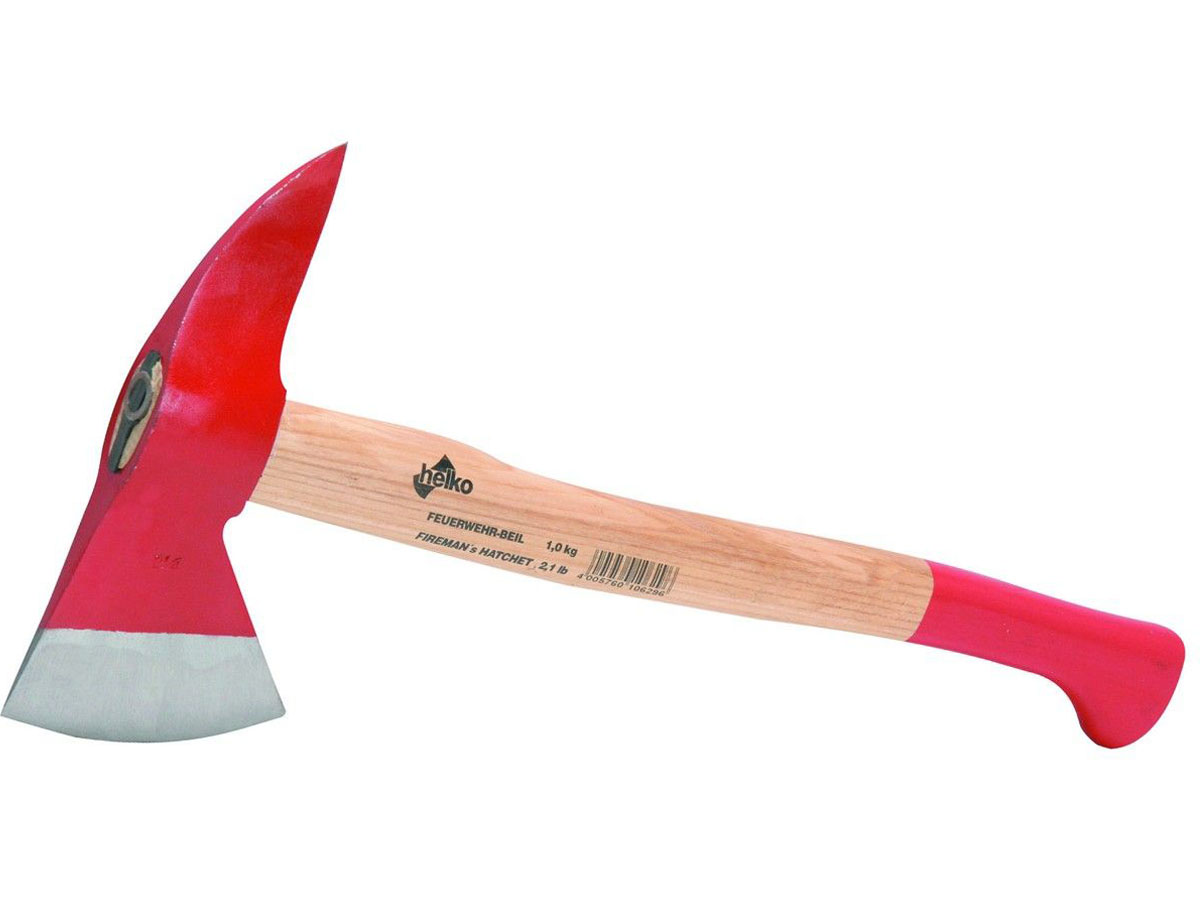
Named after the inventor himself, the Pulaski is one of the most common firefighting tools, particularly used in wildland firefighting. It's the axe that many firefighters carry. The tool features a mattock for digging and an axe for chopping.
When Was It Invented?
Most people credit Edward Pulaski as the inventor of the Pulaski tool. Working as a miner, railroad worker and even a ranch foreman, he eventually became a U.S. Forest Ranger. He invented the Pulaski tool in 1911 which is great in and of itself but he was also a hero too. He saved 40 crewmen in the "Great Idaho Fire'' and remained a ranger until 1929. All he asked for in return was compensation for his wounds and money to upkeep the graves of all the firefighters who died.
Nebraska – Cliff Notes
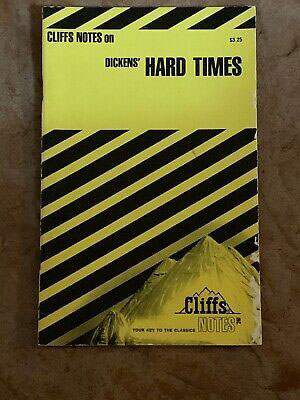
Keeping up with your coursework in college can seem like an impossible task at times, especially when there is a lot of reading involved. Luckily, there's always been one handy book series to get us through the most boring of novels that have become part of classic literary canon: Cliff Notes. Many students rely on Cliff Notes to get through their courses, and if you are one of those students, you probably didn't even make it this far down the list of inventions.
When Was It Invented?
Cliff Notes was conceived by Clifton Hillegass of Nebraska in 1958. Working for the Nebraska Book Company, Hillegass met with Jack Cole who published study guides for students and sold Hillegass the rights to those guides. At the start of his business, he and his wife Catherine published Cliff Notes for 16 different Shakespeare plays. By 1964, they sold millions of guides each year.
New Mexico – Personal Computer
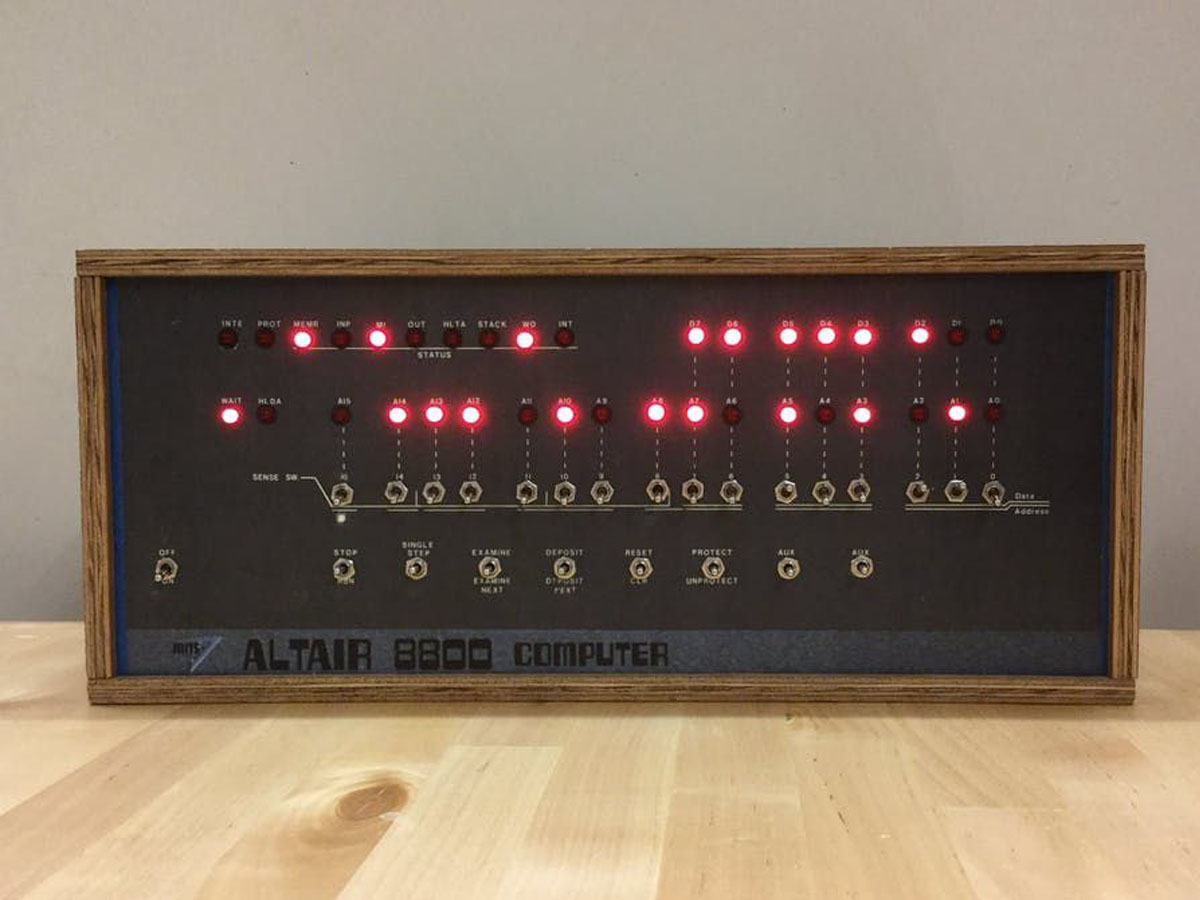
In the early days of the computer, the machines took up whole rooms. It was not until the Altair 8800, developed by Ed Roberts of the Micro Instrumentation and Telemetry Systems in New Mexico, that we could have a computer in our very own home. Unfortunately, it came as a kit, so it was not quite user-friendly to say the least.
When Was It Invented?
The Altair 8800 was created 1974. By early 1975, Bill Gates would read about the computer in an electronics magazine and become inspired. They met with Ed Roberts for a personal demonstration of the machine and then developed an Altair emulator that ran on a microcomputer, and a BASIC interpreter – thus creating the early version of what we know as Microsoft.
Kansas – Helicopter

When Were They Invented?
The first helicopter was invented in Goodland, Kansas in 1909. William Purvis and Charles Wilson created the first patented helicopter that was allegedly inspired by a child's toy whirligig. On Thanksgiving Day, they set up a public demonstration to attract investors. The machine worked and they got their money.
Mississippi – Antifungal Cream

When Was It Invented?
Rachel Fuller Brown and Elizabeth Lee Hazen discovered nystatin in 1950. Elizabeth Lee Hazen, herself, graduated from the Mississippi Industrial Institute and College with a bachelor's degree. Together, Brown and Hazen researched fungi and searched for an effective antifungal treatment for widespread diseases like pneumonia and thrush.
Arkansas – The Bowie Knife

The Bowie knife is one of the most recognizable styles of knives, other than a chef's knife, and it also has incredible historical significance. The Bowie knife has been a popular design for hunting and skinning, as well as self-defense. The sturdy design made the knife ideal for frontiersmen as it could withstand harsh weather conditions.
When Was It Invented?
The name is associated with Jim Bowie (not David Bowie, sorry) who gave it to an Arkansas blacksmith named James Black. Bowie handed him a wooden model and had Black replicate the design. At the same time, Black created a modified version with a sharped curved top edge – a design which Bowie preferred.
Nevada – Blue Jeans

If there is one reliable piece of casual clothing, it's gotta be jeans. A good pair of jeans can go with almost any shirt. They are comfortable, they look good, and they last a long time. People all over the globe love jeans and the variety of styles available. Jeans have been around for almost 200 years, but they didn't always look like most contemporary jeans, in that they weren't always blue and they didn't have any rivets.
When Was It Invented?
In the 1870's, Jacob W. Davis invented the blue jeans as we know them today when he reinforced the seams of jeans with copper metal rivets. The Nevada tailor asked to partner with Levi Strauss to patent and begin producing jeans with the rivets. Strauss agreed and the two business partners were awarded their patent in 1873.
Iowa – Sliced Bread

The best thing since sliced bread is, well – sliced bread, of course. Pre-sliced bread has made our lives easier in many ways. It allows us to quickly make a sandwich for our kids in the morning. It fits in our toasters just right so we can have an easy breakfast and gives us French toast in uniform slices.
When Was It Invented?
Otto Frederick Rohwedder of Iowa had a brief career as a jeweler and on the side sought to invent new machines. One of his machines was a bread slicing machine. Although we could have had sliced bread sooner, he lost his prototype and blueprints in a factory fire in 1917. By 1927, he designed a new bread slicing machine that also wrapped the bread. He patented the machine and sold the first one to his baker friend who sold the first loaf of sliced bread in 1928.
Utah – Television

When Was It Invented?
Philo Taylor Farnsworth was born and died in Utah. During his time, he made numerous contributions in creating the world's first television, developing the cathode ray tube that displayed images captured by the image dissector that converted individual parts of an image into electricity. His work started in 1921 but the first prototype was not ready until 1938.
Connecticut – Portable Typewriter
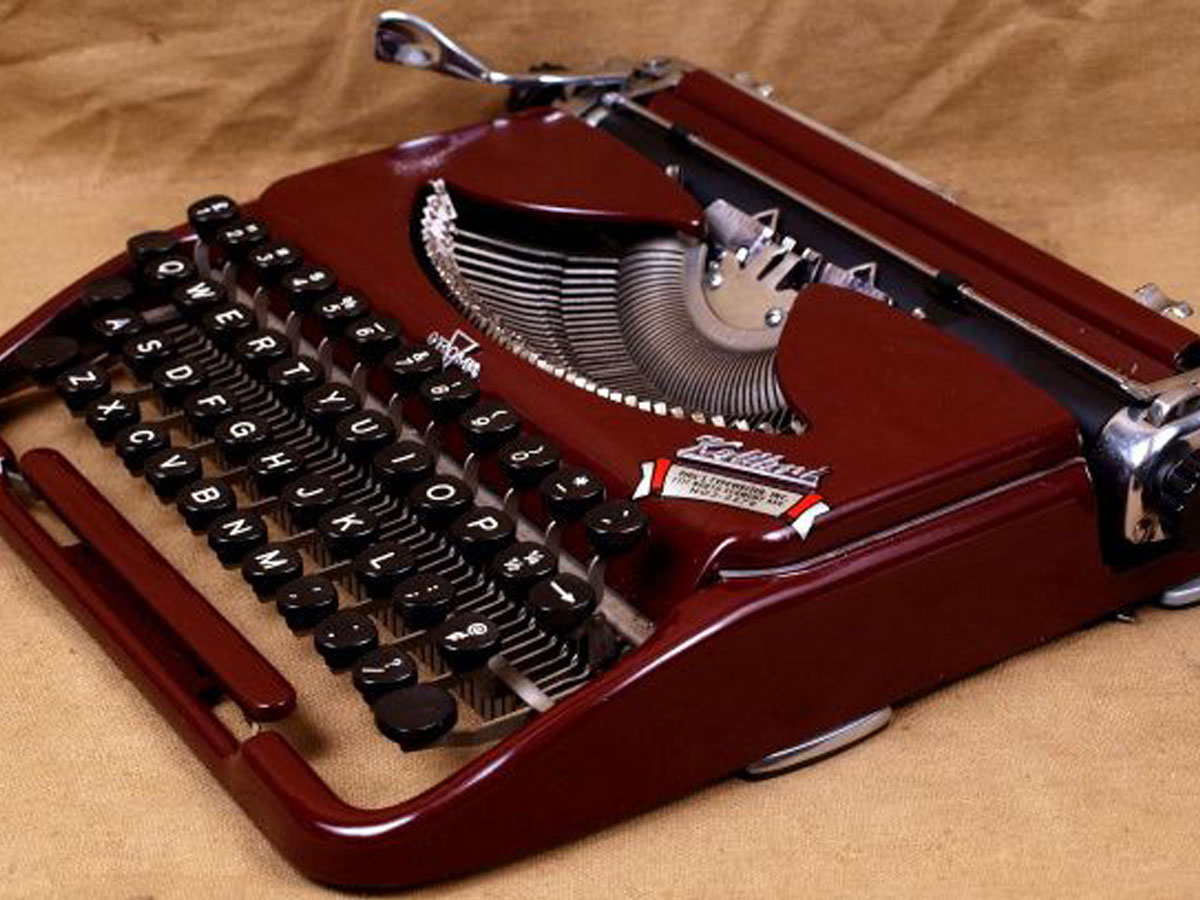
When Was It Invented?
George invented the Blickensderfer (that's it) Typewriter and patented it in 1891. They were initially manufactured in Stamford, Connecticut and quickly became popular overseas. Although the key layout was different from the QWERTY of today, his typewriter paved the way for the concept of portable typing that is commonplace now.
Oklahoma – Shopping Carts

When Was It Invented?
Sylvan Goldman, owner of the Humpty Dumpty supermarket chain in Oklahoma City, invented the first shopping cart design in 1937. He was awarded the patent for his design in 1940 and received royalties for years. And thanks to Goldman, grocery shopping isn't back-breaking labor anymore.
Oregon – The Mouse

No, not the rodent, but the kind of mouse that you actually want inside your home or office. It's the mouse you use to control the cursor on your monitor that allows for easy pointing and clicking. You can browse the internet more efficiently and it gives you the feeling of control over your computer, right in the palm of your hand. It may not be something you think about a lot, but the mouse really lends to your computer's user-friendliness.
When Was It Invented?
Doug Engelbart of Portland, Oregon patented the computer mouse in 1970 but gave the first demonstration of his device in 1968. Other technology he demonstrated at the time was a visual display, video conferencing tech, and computers running on the ARPAnet – an internet predecessor. He was truly a man ahead of his time as the mouse did not take off until nearly a decade later.
Kentucky – Three-Position Traffic Signal
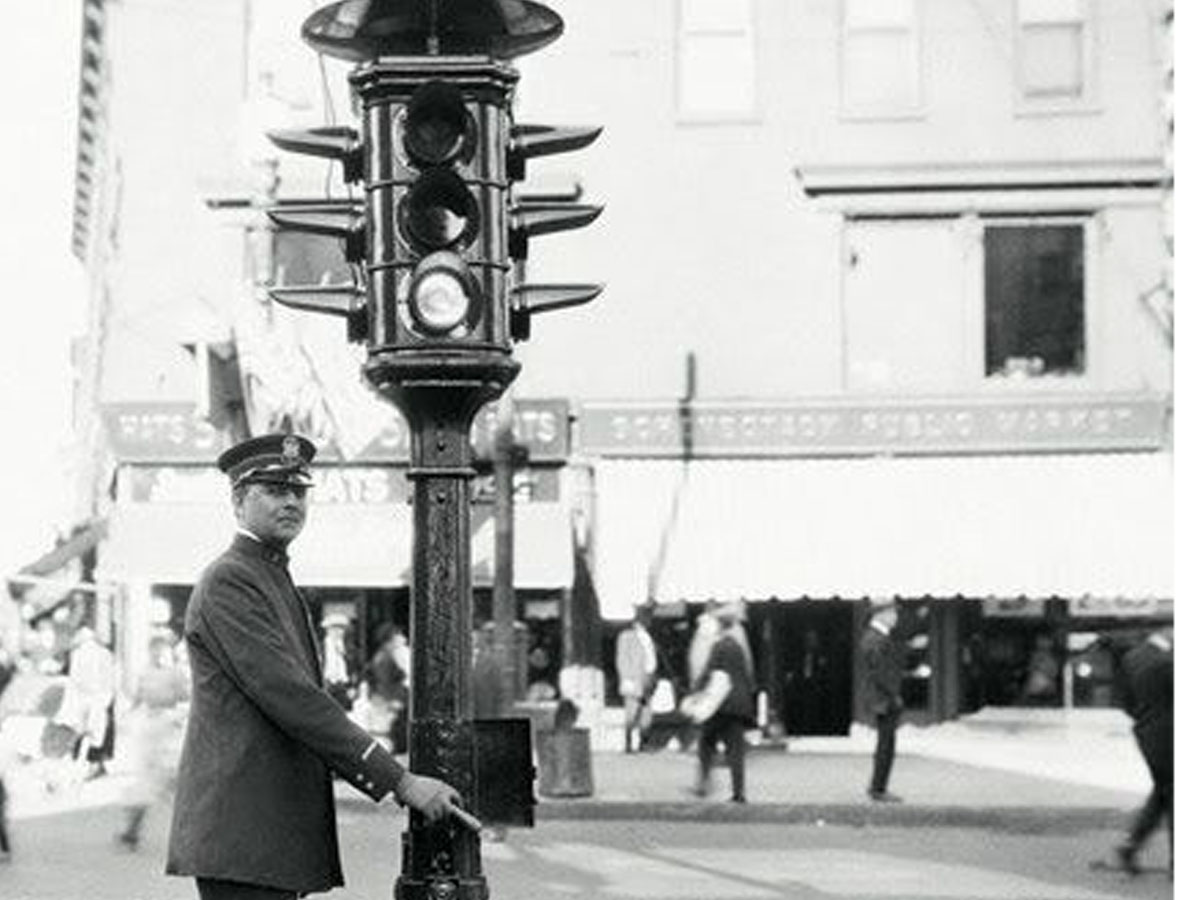
The three-position traffic signal is one of the most important inventions of the 20th century. It keeps drivers and pedestrians safe. It controls the flow of traffic, helping to prevent chaos in the streets. Driving to work or picking the kids up from school each day, you probably don't think much about who invented the traffic light even though you are a lot safer because of him.
When Was It Invented?
Garrett Morgan was an African-American inventor born in Paris, Kentucky, and was the son of a freed slave. He created the smoke hood in 1912, which was the predecessor to the gas mask. In the 1920's he started work on a three-position traffic signal, addressing an increase in traffic accidents. Morgan's patent was awarded in 1923.
Louisiana – Binocular Microscope
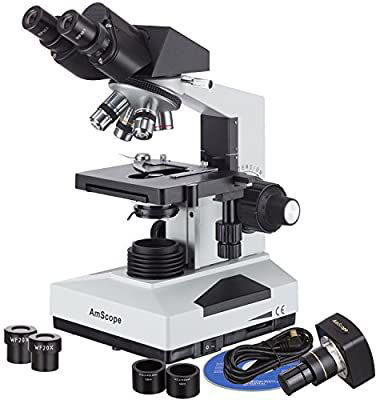
The microscope is one of the most important tools for scientists, doctors, forensic experts, and much more. It allows for the study of diseases, bacteria, cells, proteins, tissue and forensic evidence, among other things. We know a whole lot more about the world than ever before, in part because of microscopes. Before the 1800's, the only available microscope had only one viewing lens and provided only a narrow field-of-view. A binocular microscope offers a wider field-of-view and is also a lot more comfortable to look through.
When Was It Invented?
John Leonard Riddell changed the world of science when he invented the first binocular microscope, while working as a chemistry professor from 1836 to 1865. He lectured at the Medical College of Louisiana in New Orleans. This allowed him to undertake an extensive study of cholera, a disease that is still a pandemic in undeveloped countries today.
Alabama - Windshield Wipers

When Was It Invented?
Believe it or not, windshield wipers were not invented until 1903 and that means some drivers were somehow getting along without them. Fortunately, they were invented before the automobile industry started taking off. Mary Anderson of Alabama got the idea while traveling on a trolley car during a visit to New York. The operator of the car was struggling to see through the ice covering his window. She got a 17-year patent for her design but could not sell the idea. Only after the patent expired did the automobile start utilizing her design. Figures.
South Carolina – Barbecue

When Was It Invented?
South Carolina barbecue can be traced back centuries ago. Understanding that barbecue combines heat and smoke to cook and flavor meat, the first true barbecue happened in a Spanish occupied fort, north of Charleston, South Carolina. According to Lake High Jr., author of "A History of South Carolina Barbecue," a group of Native Americans and Spanish settlers, in and around 1566, cooked various whole animals placed on sticks over an open flame, including pigs, and thus barbecue was born.
Minnesota – Betty Crocker Cake Mix

When Was It Invented?
Although there were instances of pre-mixed gingerbread and other kinds of cakes, General Mills debuted the first successful and widely available cake mix, the Betty Crocker Ginger Cake mix in 1947. The Minnesota company would introduce Devil's Food and Party Cake mixes by 1949.
Colorado – Tampon

Being on your period is no fun as it is but it might sound like a nightmare going through your next period without a tampon. Although some form of tampon has been around for thousands of years in various cultures, the modern tampon as we know it was not invented until the 20th century.
When Was It Invented?
Dr. Earle Haas of Colorado invented and patented the Tampax tampon that has the tube-within-a-tube applicator as you are probably familiar with. The rights were purchased by Gertrude Schulte Tenderich in 1933 and she began selling them under the trademarked name.
Wisconsin – Hamburger

Who doesn't love a good hamburger? The hamburger is the quintessential American food. Not only is it delicious, but a nice, juicy burger can turn a bad day around and really hit the spot. Whether you’re topping it with cheese, fruits, vegetables, or some scrumptious bacon, the hamburger is an incredibly versatile food. There's no one right way to make a hamburger, even down to the kind of meat (or beyond meat) you use. And though you may think you know all there is to know about burgers, few are aware of the burger's true origins.
When Was It Invented?
The world's first hamburger was served by Charlie Nagreen at the Seymour Fair in Wisconsin in 1885. At the time, it was just a flattened meatball that was placed between two slices of bread. While Germany is often credited with the invention of the hamburger, in truth it was Nagreen that turned the idea of a Hamburg steak from Germany into the sandwich that we know.
Maryland – Artificial Sweetener

As much as we all love sugar, it's only safe in moderation. For those with diabetes, it's a good idea to avoid it as much as possible. Fortunately, for those with a sweet tooth, there are other options. Artificial sweeteners like stevia, aspartame and sucralose are just some of the available options. Which one you can handle depends largely on personal preference, but it all started with saccharin.
When Was It Invented?
Chemist Constantin Fahlberg invented saccharin by accident at Johns Hopkins University in Baltimore, Maryland. His discovery began when he forgot to wash his hands at the lab and sat down to eat. He had noticed a sweet taste coming from his hands and went back to the lab to discover its source. Saccharin was found to be the culprit and Fahlberg published his findings. Later granulated saccharin would be sold as the product Sweet N' Low.
Missouri – Iced Tea

It may be a simple invention, but it sure is a great one. Hot tea is great on a cooler morning, but on a hot afternoon, iced tea is really where it's at. Whether you prefer green tea, black tea, white tea, or herbal tea, you can make it as sweet or bitter as you like—but no matter what you choose, it's always refreshing. Most important of all, it's an American tradition that's more than 100 years old.
When Was It Invented?
Invented at the 1904 World's Fair in St. Louis, Missouri, Richard Belchynden came up with a lucrative alternative to hot tea that could sell well on hot days. All he had to do was add ice—and people loved it. While there are recorded instances of iced tea prior to 1904, it was at the World's Fair in St. Louis that the concept really took off.
Indiana – Gas Pump

You may not like the prices, but the gas pump is a necessity of life (provided that you own a car). Fueling up your car and getting where you need to go, quickly, is something you may not think too much about. However, what you may not realize is that you have a man named Sylvanus Freelove Bowser to thank for it. And no, that's not a Harry Potter character.
When Was it Invented?
Sylvanus Freelove Bowser was an Indiana inventor that started the S. F. Bowser & Company in 1885. The company started out dispensing kerosene, until 1905, when it introduced the first self-measuring gasoline storage pump. Before the gas pump, you could only get gasoline from places like a coal yard or lumber yard, so this self-service pump was an excellent alternative. Consumers could now gas up safely and conveniently.
Tennessee – Atomic Bomb
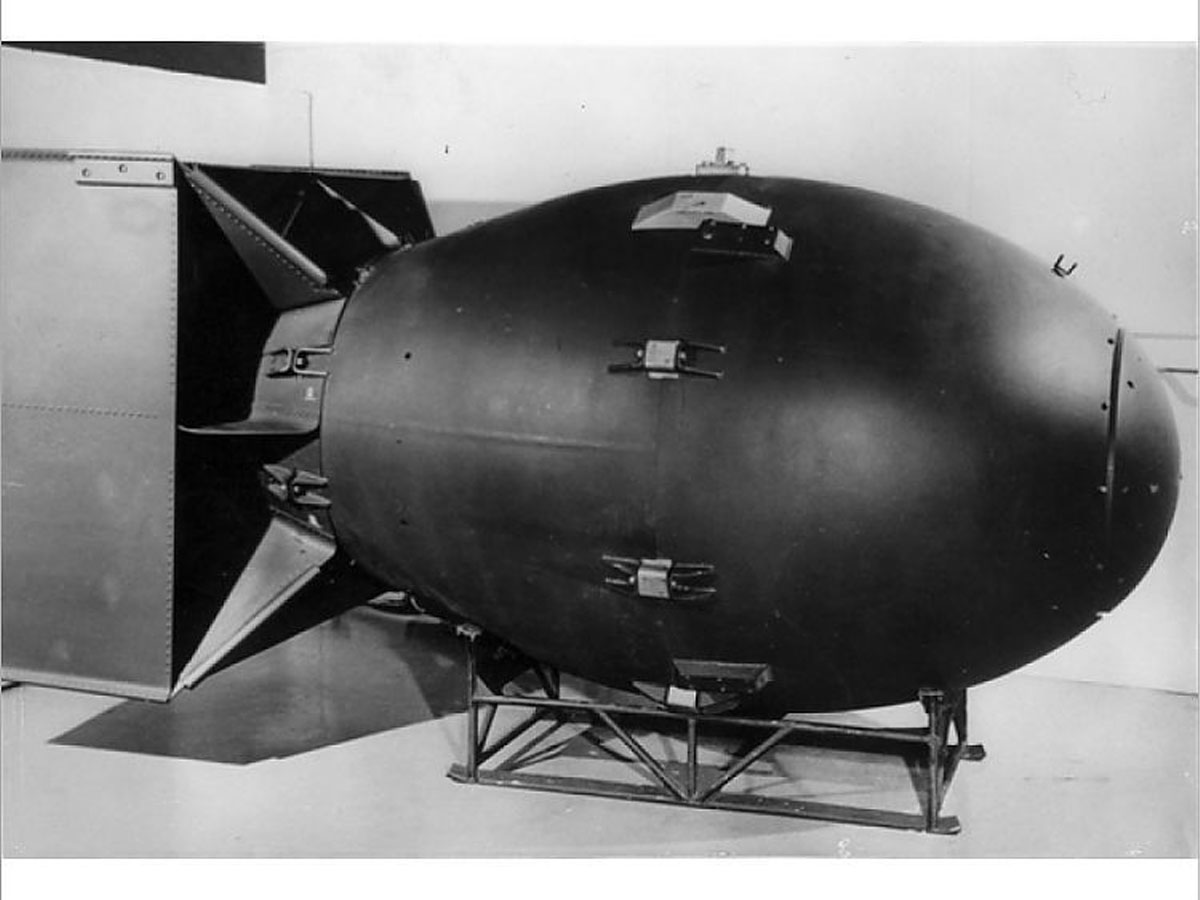
When Was It Invented?
Manhattan may be in the name, the Manhattan Project was headquartered at Oak Ridge Reservation in Tennessee. Over 75,000 people worked on the Manhattan Project that developed the first atomic bomb. Today you can visit the Manhattan Project National Historical Park in Tennessee to learn more.
Massachusetts – Tupperware

When Was It Invented?
Tupperware was invented by Earl Silas Tupper in a town called Leominster, Massachusetts. While Tupper worked on various failed pitches in terms of invention ideas, one was a surefire moneymaker. Tupper developed the idea of Tupperware in 1942 and was conceptualized as a bell-shaped container. By 1948, Tupperware would be available to consumers.
Arizona – TASER

Providing a non-lethal alternative to firearms, the TASER is a fantastic invention for use in personal defense and law enforcement. Today's TASERs feature darts attached to an insulated copper wire that delivers an electric current with the goal of ceasing voluntary movement of the muscles. The use of these non-lethal weapons is, nevertheless, a subject of controversy.
When Was It Invented?
Even though the original stun gun was invented somewhere else, the TASER proved a superior iteration as it did not require gunpowder in order to fire. The TASER was invented in September 1993 by a NASA employee named Jack Cover. Invented in Scottsdale, Arizona, Cover developed a TASER that would fire using compressed air.
Washington – Bread Clips

When Was It Invented?
Floyd Paxton invented bread clips in 1952. Flying home, holding a bag of peanuts, he realized that there was no way to reseal it. From there, he developed a bread clip design by carving one out of an old credit card in his wallet. He would later implement this idea in the fruit packing business, when his company, Pacific Fruit was looking for a rubber band alternative. He created a new clip from Plexiglas and then designed a machine that could quickly produce the clips in mass quantity.
Virginia – Microphone

When Was It Invented?
James West developed the microphone in 1960, while at Bell Labs. Working with Gerhard M. Sessler, the two developed an inexpensive compact microphone that relied on electret transducers (which they also invented) and by 1968 was mass-produced. This microphone may not have been the world's first microphone, but it is the same microphone included in most modern technology, including smartphones.
New Jersey - Lightbulb

Although a candlelit dinner is nice every now and then, the safest and most practical option for lighting your home would have to be the lightbulb. Before the lightbulb, candles and oil lamps were commonly used lighting solutions for homes, but they weren't exactly the safest options either. Fortunately, Thomas Edison changed all that with the invention of the lightbulb.
When Was It Invented?
In January 1879 at his laboratory in Menlo Park, New Jersey, Edison built the world's first high-resistance incandescent light bulb. With this lightbulb, electricity was passed through a platinum filament inside a glass vacuum bulb that prevented the filament from melting. On the downside, the bulb could burn for a few hours. However, it would pave the way for the development of better, longer-lasting light bulbs in the future.
Michigan – Baby Food

Other than milk, it's hard to say exactly what babies were fed before baby food. Luckily, we don't have to worry about it now. With baby foods, you can meet all of your child's nutritional needs, including proteins, vegetables, fruits and grains. There are tons of baby food options on the market, so there's something for every baby. For this, we can thank Daniel Frank Gerber, Jr. of Michigan.
When Was It Invented?
In 1928, Daniel Frank Gerber, Jr. of the Fremont Canning Company in Fremont, Michigan, introduced Gerber's Baby Food. His father's company, which already produced canned fruits and vegetables, began producing strained versions of prunes, carrots, spinach, peas and other nutritious foods. It all began when a pediatrician recommended to Gerber's wife, Dorothy, that she start hand-straining food for their infant daughter, Sally. Gerber turned this pediatrician's advice into a business opportunity and the rest is history.
North Carolina - Vicks

When you are suffering from a cold, flu or allergies, congestion is easily one of the worst symptoms. A human being can deal with a lot of suffering but feeling like you cannot breathe is just awful. There are a lot of medications and antihistamines out there but they don't always work the way you want. If there is one reliable product when it comes to dealing with congestion, it would have to be Vicks VapoRub, which was invented over 125 years ago.
When Was It Invented?
In 1894, the Vicks Croup & Pneumonia Salve was the first iteration of the VaporRub we know today. Lunsford Richardson of Greensboro, North Carolina was the owner of W.C. Porter’s drug store. While running this store, he patented 21 medicines for the Vick's company including what would later be called Vicks VapoRub in 1911. With flu season coming up, you can be extra thankful for Mr. Richardson when you grab that jar of Vicks.
Georgia – Anesthesia

When Was It Invented?
Crawford Long began experimenting with anesthesia in the 1840's using ether. Long first used it in 1842 on a patient with a tumor located in his neck. The patient inhaled the anesthetic from a cloth and was sedated so that Long could perform the surgery. A second tumor was removed, and then Long began incorporating anesthesia during amputation procedures and childbirth. By 1846, William T. G. Morton would be the first to perform surgery publicly using anesthesia.
Ohio – Automobile

When Was It Invented?
John William Lambert, residing in Ohio City, created the first automobile in 1890. His car was gas-powered and featured only a single cylinder (today, you can get up to eight). It was capable of reaching speeds of up to 5 miles per hour. While that doesn't seem too impressive now, for the 19th century, it was a huge achievement. Now we can be thankful that a Mustang isn't just a horse.
Illinois – Remote Control

When you get home from work and watch some TV to relax, the last thing you want to do is get up from the couch to do it. Back in the day, that's exactly what you had to do if you wanted to turn on the TV or change the channel. If you can imagine the monotony of getting up and walking to the TV again and again, then you probably realize how important a remote control really is in your daily life.
When Was It Invented?
The remote control was first invented in Chicago, Illinois by the Zenith Radio Corporation in 1950. Called the "Lazy Bones," the remote was a wired remote that allowed people to operate their televisions from their couches. By 1955, Eugene Polly invented the Zenith Flash-Matic remote, which was much like the television remotes of today in that it was wireless.
Pennsylvania - Bifocals

When you think of great American inventors, one of the most prominent names that comes to mind is Benjamin Franklin. During his lifetime, he created a wide variety of inventions, many of which we use to this very day. Franklin created a more efficient fireplace, street lamps, the odometer, the flexible catheter and the lightning rod among others. However, it's the bifocal lens that remains mostly unchanged to this day and has its origins in Pennsylvania.
When Was it Invented?
Invented in Philadelphia, around 1784, Ben Franklin combined two different lenses, cut in half, with varying thicknesses, and fixed them to eyeglass frames. This would allow those with vision problems to read easier or see further away as needed. Franklin referred to these at the time as "double spectacles." Franklin himself suffered from presbyopia, or rather farsightedness, so his bifocals were invented out of necessity.
New York – Toilet Paper

Aside from the panic buying that caused a sweep of shortages across the country, toilet paper has been with us through thick and thin, and 2020 has shown just how much we take it for granted. From standard one-ply found in public restrooms and two-ply options for the home, there's nothing worse than finding yourself on the toilet next to an empty roll.
When Was It Invented?
While you might not think of New York as the epitome of hygiene, it was in NEW York City that Joseph Gayetty invented commercial toilet paper. It was first marketed in 1857, predating the American Civil War. The first toilet paper was made from Manila hemp paper and featured an aloe lubricant and an anti-hemorrhoid medicine. It was designed to clean, as well as relieve soreness and discomfort, and has since become a staple of every home in America.
Florida – Suntan Lotion

When it comes to the sun, we as people, have a bit of a "can't live with it, can't live without it" relationship. The sun offers numerous benefits, helping us make vitamin D, reduce stress, lose weight, and improve sleep cycles among other things. At the same time, it has detrimental effects on our skin causing an unpleasant burn when exposed for extended periods, and sometimes even worse complications. Millions of people are diagnosed with skin cancer every year, but you can help prevent it with a quality sunblock.
When Was It Invented?
Today, you probably can't imagine going outside in the sun without suntan lotion, or sunscreen, as many call it, but it wasn't always here to protect our skin from the sun's harsh UV rays. It took a pharmacist named Benjamin Green of Miami Beach to invent it. The first sunscreen was adapted by Green using red veterinary petrolatum which he found was effective at preventing sunburn. While it wasn't as soothing as modern suntan lotion, it did the job, and Green helped turn suntan lotion into a commercial success.
Texas – The Frozen Margarita

When Was it Invented?
In Dallas, Texas, Mariano Martinez, a Mexican-American entrepreneur, turned a soft-serve ice cream machine into the world's very first frozen margarita machine. Starting in 1971, Martinez had modified a used soft-serve ice cream machine to work much like a Slurpee machine, but instead of Slurpee ingredients, he put in all the components of a margarita. The result, of course, was the delicious alcoholic smoothie we enjoy to this very day. And while you may not have your own frozen
California – WD-40

Where Was It Invented?
WD-40 was invented in 1953 by Norman Larsen in San Diego, California. The founder of the Rocket Chemical Company was trying to develop a rust-preventative solvent and degreaser to use in the aerospace industry. The first major application of WD-40 was on the outside surface of the Atlas Missile with the goal of inhibiting rust and corrosion. It worked so well, in fact, that employees of the Rocket Chemical Company started taking it home with them. Now sold across the country, you would be hard-pressed not to find it in any home.
 Author
Ron Winkler
Last Updated: December 03, 2025
Author
Ron Winkler
Last Updated: December 03, 2025